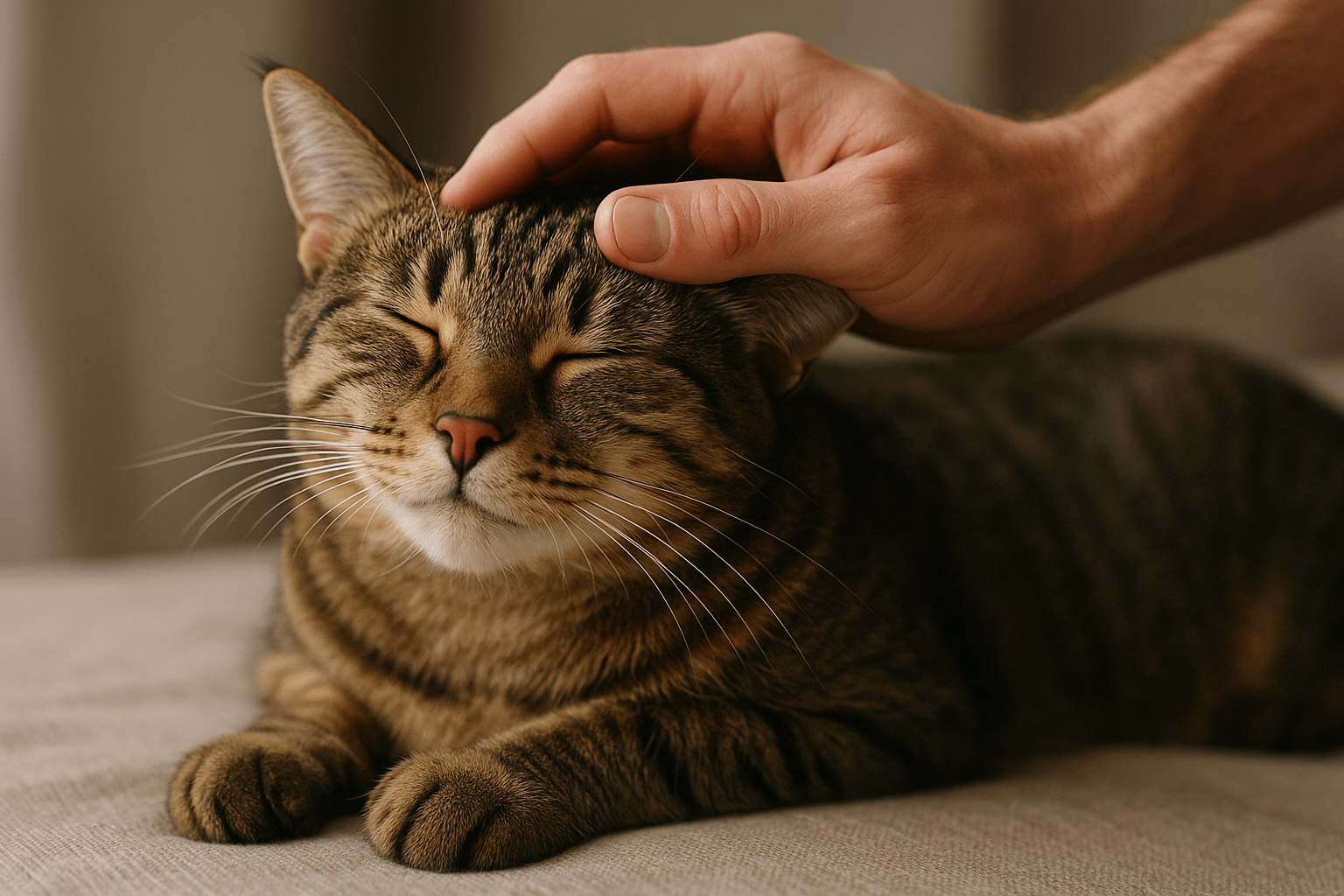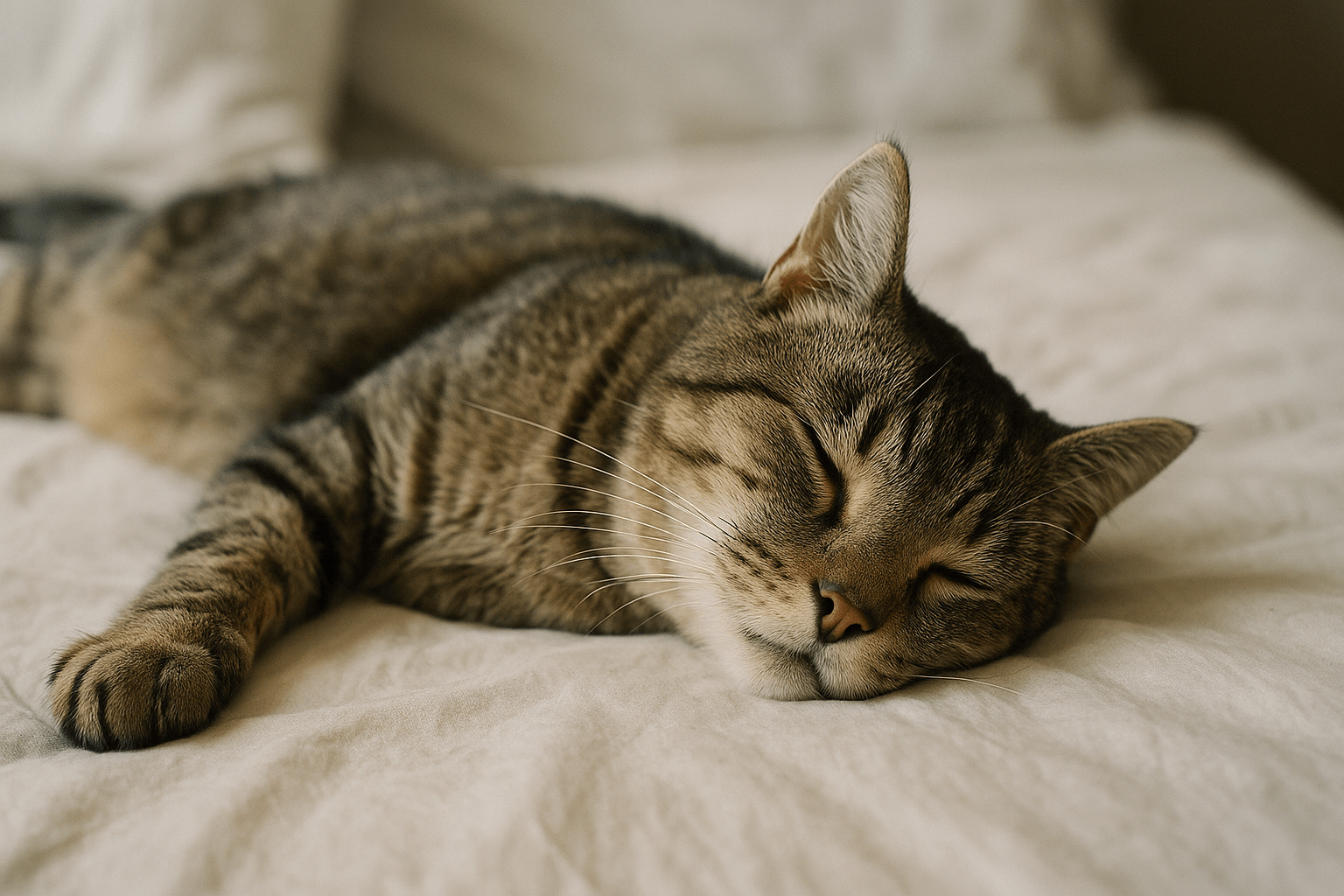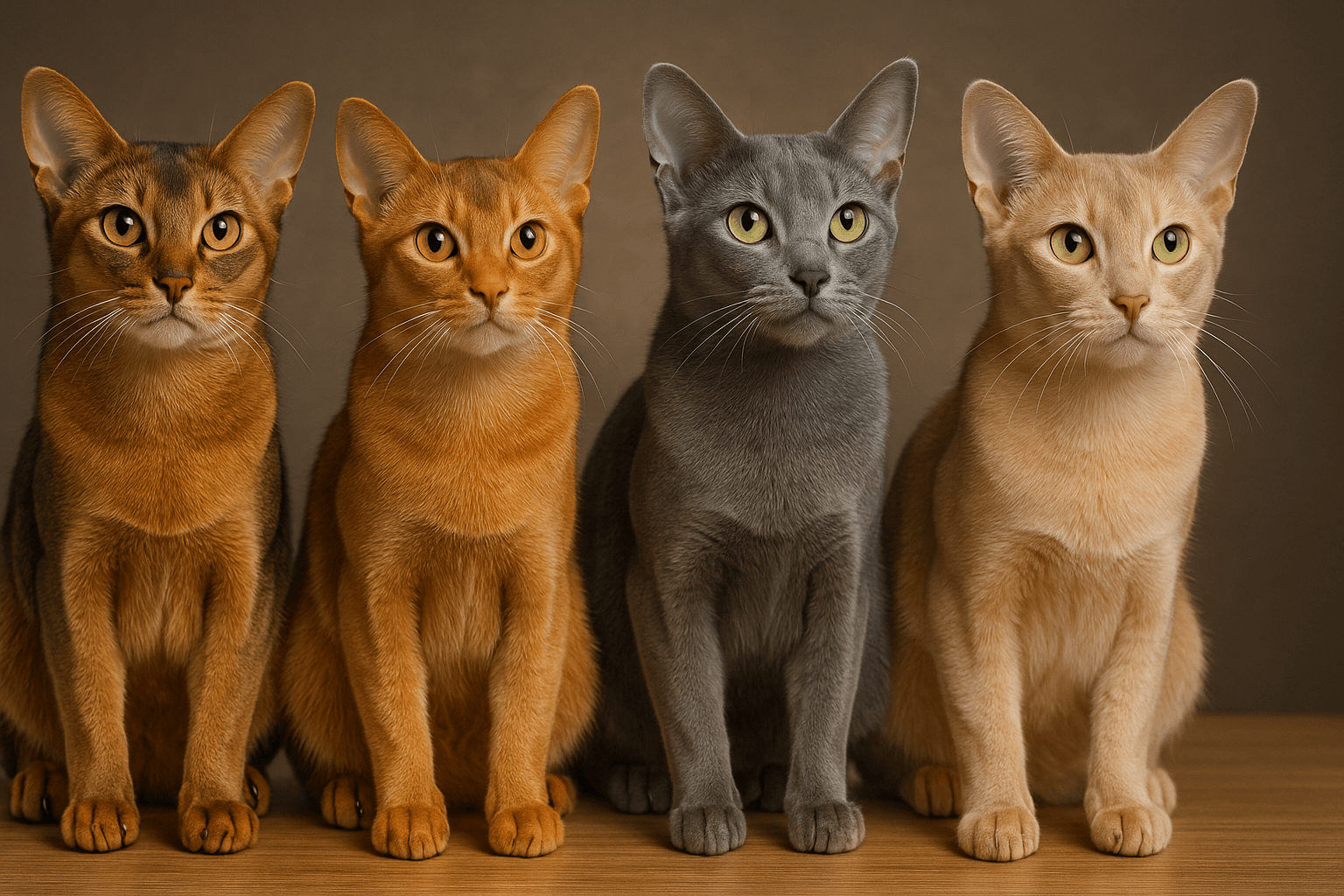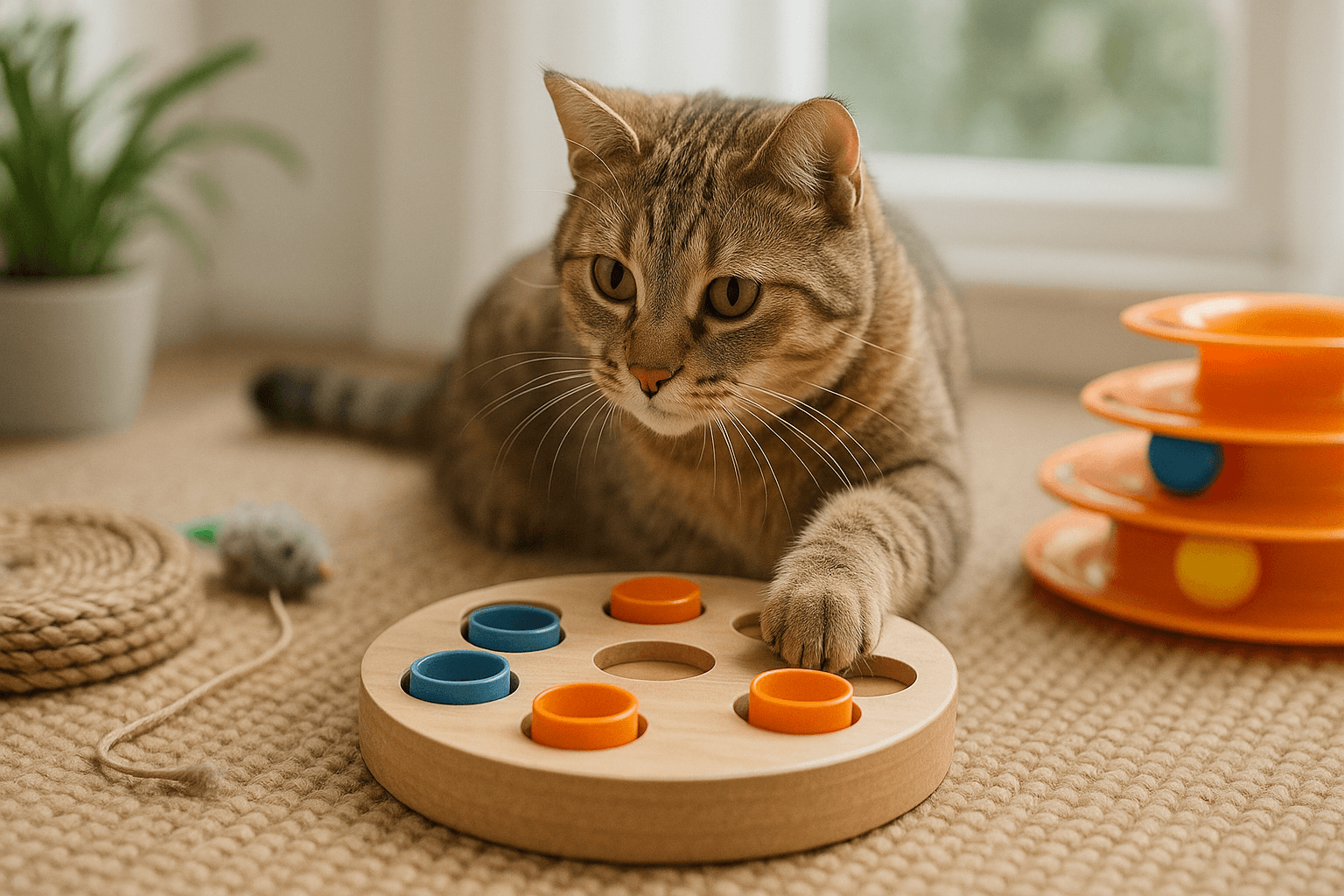Where Do Cats Like to Be Pet?
Every cat owner knows that petting their feline friend can be a delightful bonding experience—but only if done right. While some cats seem to crave affection, others may react with a swipe or a growl if touched in the wrong spot. Understanding where cats like to be pet is key to ensuring both you and your furry companion enjoy the interaction. From head scratches to chin rubs, cats have specific preferences influenced by their anatomy, instincts, and individual personalities. In this blog post, we’ll explore the best places to pet your cat, how to read their body language, and tips for creating positive touch experiences.
Best Places to Pet Your Cat
Cats are creatures of habit and instinct, and certain areas of their body are more receptive to petting than others. Focusing on these spots can help you build trust and strengthen your bond with your cat.
The Base of the Ears:
Many cats love gentle strokes at the base of their ears, where scent glands are located. This area is often associated with affection and comfort.Under the Chin:
Rubbing under the chin mimics the grooming behavior cats use with each other, making it a favorite spot for many felines.Behind the Ears:
Gently scratching behind the ears can feel soothing and rewarding, especially for cats who lean into your hand during petting.Along the Cheeks:
The sides of a cat’s face, particularly near the whiskers, are rich in scent glands. Petting here can feel comforting and familiar.The Back (Near the Shoulders):
Most cats enjoy being stroked along their back, particularly near the shoulders, as it feels natural and non-intrusive.
By focusing on these areas, you’re likely to elicit purrs of contentment and create a positive association with petting.
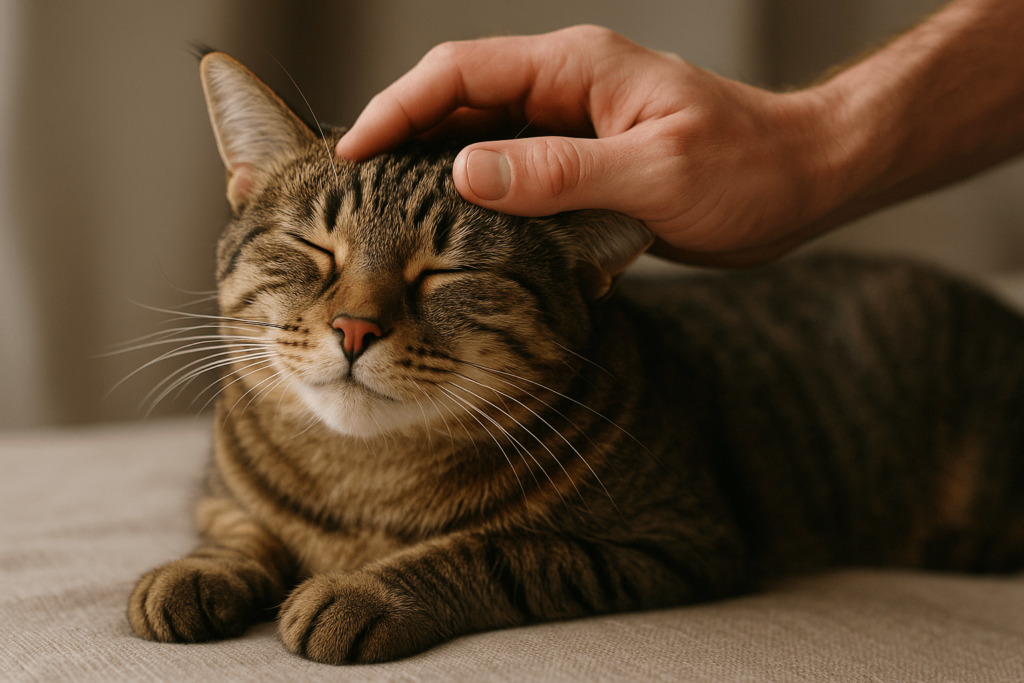
Areas to Avoid When Petting Your Cat
While some spots are cat-approved for petting, others can trigger discomfort or even aggression. Knowing which areas to avoid ensures a stress-free experience for your feline friend.
The Belly:
Though a cat’s exposed belly might look inviting, most cats find belly rubs intrusive and may react defensively.The Tail Base:
The area near the base of the tail can be overly sensitive for some cats, leading to overstimulation or irritation.Paws and Legs:
Touching a cat’s paws or legs can feel invasive, as these areas are rarely touched during social interactions.Whiskers:
Directly touching or pulling on a cat’s whiskers can cause discomfort, as they are highly sensitive sensory tools.The Top of the Head (for some cats):
While some cats enjoy head scratches, others may find prolonged contact on the top of their head overwhelming.
Respecting your cat’s boundaries helps maintain trust and prevents negative reactions during petting sessions.
Check this guide 👉Why Does My Cat Duck When I Pet Him? Best 7 Expert Tips!
Check this guide 👉How to Pet a Cat: Best 7 Expert Tips!
Check this guide 👉Why Is My Cat Drooling When I Pet Him? Best 7 Expert Tips!
Cat-Friendly Petting Areas | Areas to Approach with Caution |
|---|---|
Base of the ears | Belly |
Under the chin | Tail base |
Behind the ears | Paws and legs |
Along the cheeks | Whiskers |
Upper back near the shoulders | Top of the head (for some cats) |
How to Read Your Cat’s Body Language
Understanding your cat’s body language is crucial for identifying whether they’re enjoying petting or feeling uncomfortable. These cues can guide your interactions and ensure a positive experience.
Purring:
A steady purr often indicates contentment, though some cats may purr when anxious or seeking comfort.Leaning Into Your Hand:
If your cat leans into your touch, it’s a clear sign they’re enjoying the interaction and want more.Tail Position:
A relaxed, upright tail suggests happiness, while a flicking or thumping tail may signal irritation or overstimulation.Flattened Ears:
Flattened ears are a warning sign that your cat is feeling threatened or uncomfortable. Stop petting immediately.Biting or Swatting:
Biting or swatting is a clear indication that your cat has had enough. Respect their boundaries and give them space.
Learning to interpret these signals helps you tailor your approach to your cat’s unique preferences and needs.
Tips for Building Trust Through Petting
Petting isn’t just about physical touch—it’s also an opportunity to deepen your bond with your cat. These tips can help you create positive associations and build trust over time.
Start Slowly:
Begin with short petting sessions and gradually increase the duration as your cat becomes more comfortable.Observe Their Preferences:
Pay attention to which areas your cat enjoys being touched and focus on those spots during interactions.Use Gentle Touches:
Avoid rough or sudden movements, as cats prefer soft, deliberate strokes that mimic their grooming habits.Incorporate Treats:
Pair petting sessions with treats or playtime to reinforce positive feelings about being touched.Respect Their Limits:
If your cat shows signs of discomfort, stop immediately and give them space to retreat if needed.
By approaching petting with patience and care, you can foster a deeper connection with your cat.
Signs Your Cat Is Overstimulated
Even the most affectionate cats can become overstimulated during petting. Recognizing these signs early helps prevent negative reactions and keeps interactions pleasant.
Tail Twitching:
A rapidly twitching tail is often the first sign of irritation or discomfort.Skin Rippling:
If your cat’s skin begins to ripple or twitch under your hand, they may be feeling overstimulated.Ears Flattening:
Flattened ears signal that your cat is growing agitated and may react defensively.Turning Their Head Toward Your Hand:
If your cat turns their head toward your hand, it could be a warning that they’ve had enough.Growling or Hissing:
Vocal warnings like growling or hissing are clear indicators that your cat wants the interaction to stop.
Recognizing these signs allows you to adjust your approach and prevent unwanted behaviors.
How to Introduce Petting to a New Cat
If you’ve recently adopted a cat or are introducing yourself to a shy feline, building trust around petting requires patience and consistency.
Let Them Initiate Contact:
Allow the cat to approach you first, rather than forcing interaction. This builds confidence and reduces fear.Offer Treats During Petting:
Pairing petting with treats creates a positive association and encourages them to seek out affection.Focus on Safe Zones:
Stick to universally cat-friendly areas like the cheeks, chin, and shoulders to avoid triggering discomfort.Keep Sessions Short:
Limit initial petting sessions to a few minutes to prevent overwhelming your new cat.Watch for Positive Feedback:
Look for signs of enjoyment, such as purring or leaning in, before continuing the interaction.
With time and effort, even the shyest cats can learn to enjoy petting.
Unique Petting Preferences Among Different Breeds
While most cats share common preferences, certain breeds may exhibit unique tendencies when it comes to petting. Understanding these differences can enhance your interactions.
Maine Coons Love Attention:
Known for their friendly nature, Maine Coons often enjoy extensive petting and cuddles.Siamese Cats Crave Interaction:
Siamese cats are highly social and tend to seek out affection, including frequent petting.British Shorthairs Are Reserved:
British Shorthairs are typically more independent and may prefer shorter, less intense petting sessions.Sphynx Cats Enjoy Warmth:
Hairless Sphynx cats often appreciate full-body pets to simulate warmth and companionship.Persians Prefer Gentle Strokes:
Persians are known for their laid-back demeanor and enjoy soft, delicate touches.
Acknowledging breed-specific traits can help you tailor your approach to suit your cat’s personality.
Frequently Asked Questions About Petting Cats
Why does my cat bite me while I’m petting them?
This could indicate overstimulation or discomfort. Watch for warning signs like tail flicking or flattened ears.
Do all cats like being petted?
No, some cats are more independent and may prefer minimal physical contact. Respect their preferences.
Can I pet my cat’s belly if they roll over?
Rolling over doesn’t always mean an invitation to pet the belly—it could be a playful gesture or a trap! Proceed cautiously.
How do I know if my cat likes being petted?
Look for signs of relaxation, such as purring, kneading, or leaning into your hand.
What should I do if my cat dislikes being touched?
Build trust gradually through play, treats, and respecting their personal space until they feel more comfortable.
Creating Positive Touch Experiences with Your Cat
Understanding where cats like to be pet—and where they don’t—is essential for fostering a harmonious relationship with your feline companion. By focusing on their favorite spots, reading their body language, and respecting their boundaries, you can transform petting into a joyful and rewarding experience for both of you. Remember, every cat is unique, so take the time to learn what makes your furry friend happiest. With patience and care, petting can become a cherished part of your daily routine, strengthening the bond you share with your beloved pet.
How Do I Know If My Cat Died Peacefully? Best 7 Expert Tips! Discover the quiet signs of a peaceful feline passing and find comfort in their final moments.
How Do I Know If My Cat Died Peacefully? A Gentle Guide for Heartbroken Owners Losing a cat is not just …
Why Do Abyssinian Cat Colors Matter? Best 7 Expert Tips! Discover the genetics, rare hues, and care secrets behind Abyssinian coat colors for a healthier, happier cat.
Cat Enrichment Activities: Best 7 Expert Tips! Unlock your cat’s natural instincts with proven strategies for mental stimulation, physical health, and lasting happiness.

